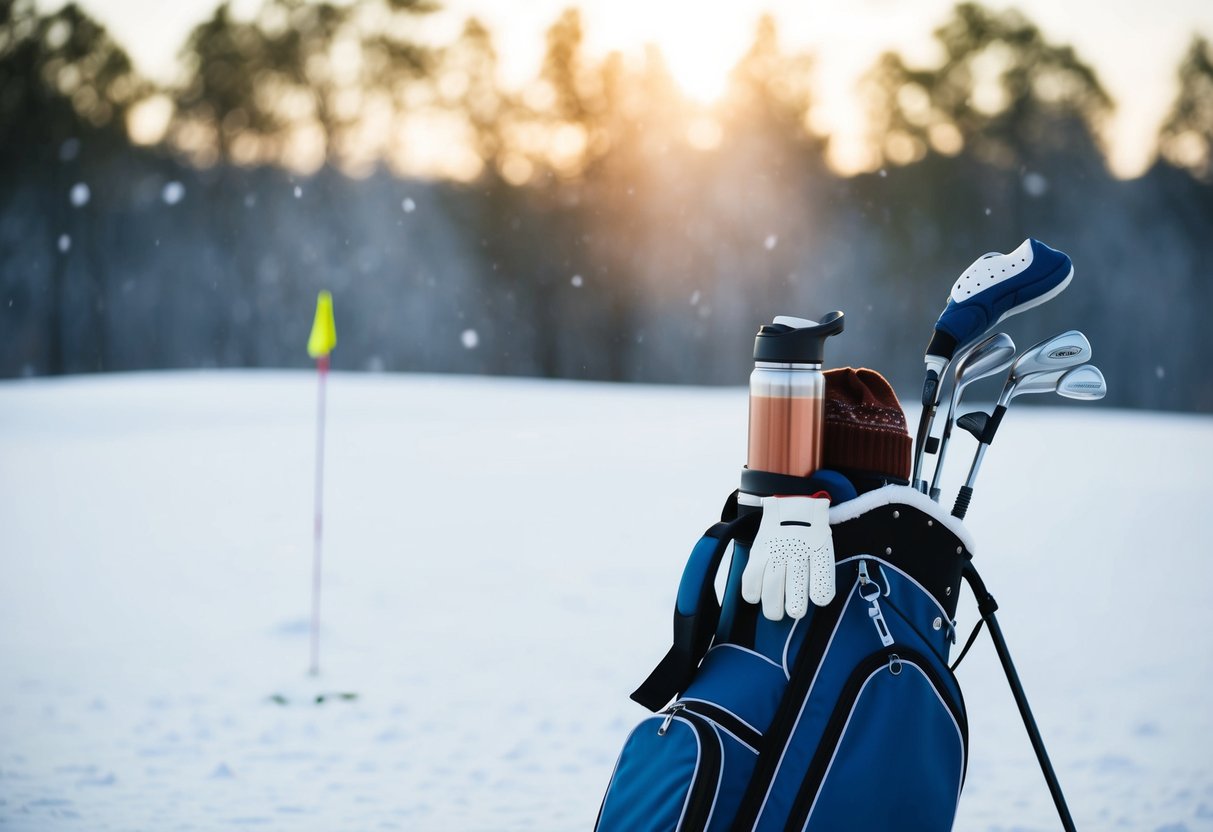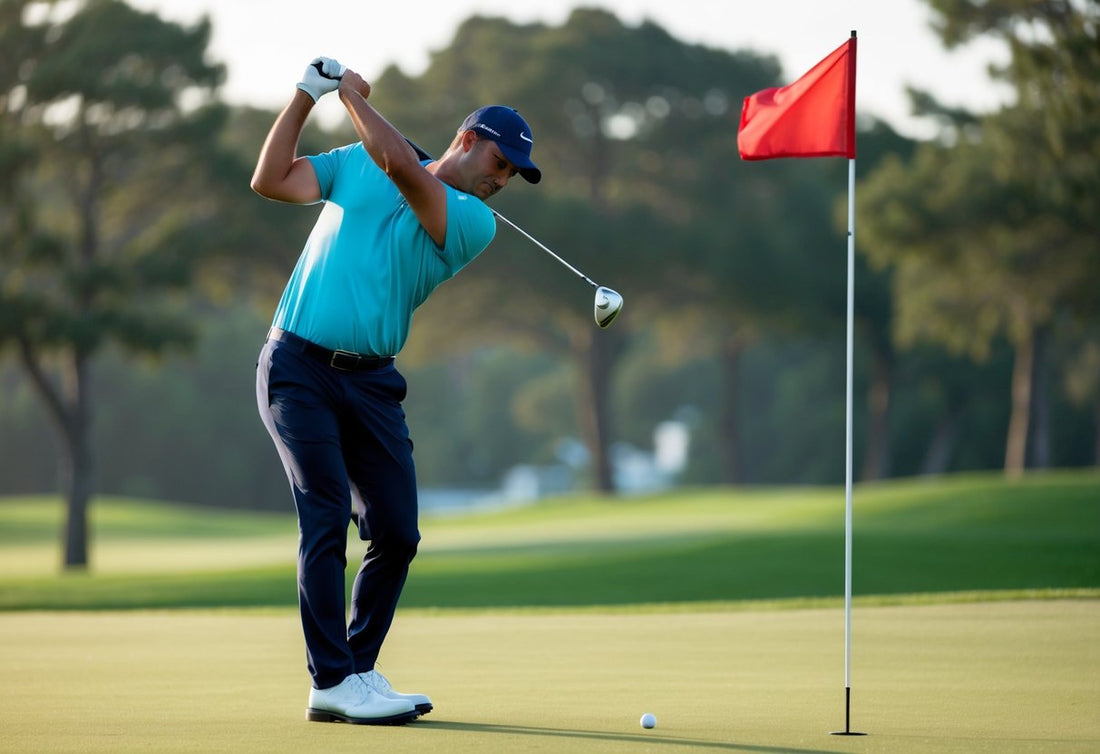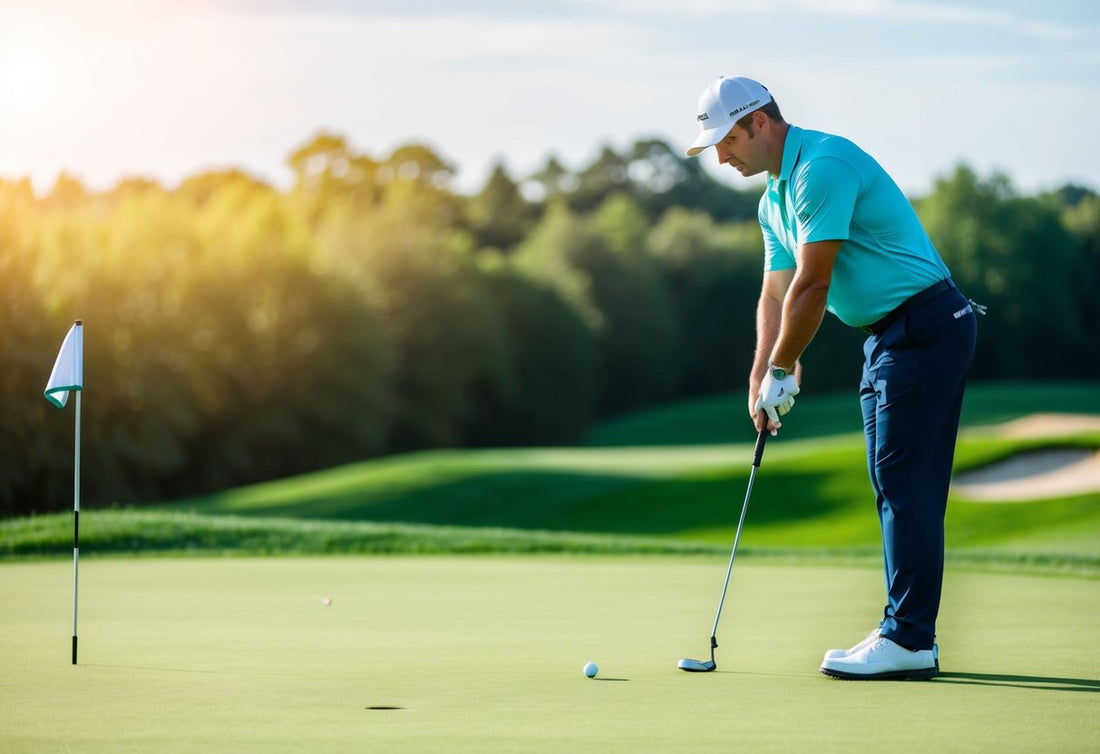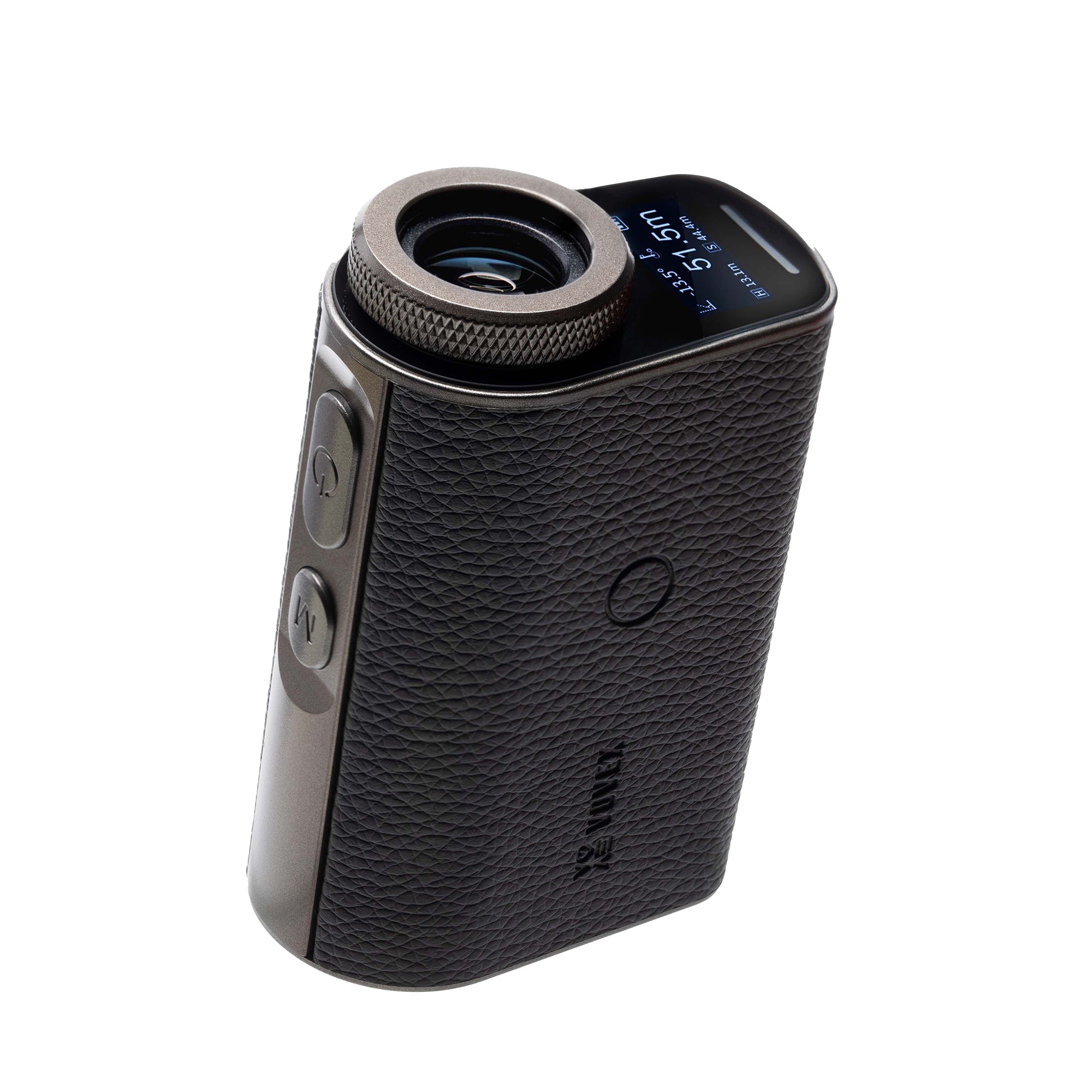Check out our golf rangefinders by Vovex to elevate your game!
Winter golf brings unique challenges and rewards for enthusiasts willing to brave the colder months. As temperatures drop and conditions change, preparing properly can make all the difference in enjoying your rounds and maintaining your game.
Equipping yourself with the right gear, adjusting your technique, and understanding how cold weather affects play are essential for winter golf success. From layered clothing to specialized winter golf balls, there's a range of equipment designed to keep you comfortable and performing well in chilly conditions.
We'll explore the key items you'll need, tips for adapting your play, and strategies to stay warm and focused on the course. Whether you're a seasoned winter golfer or considering your first cold-weather round, this guide will help you make the most of golf's off-season.
Key Takeaways
- Layered, waterproof clothing and winter golf balls are crucial for cold-weather play
- Adjusting club selection and swing techniques can improve performance in winter conditions
- Proper physical and mental preparation is key to enjoying and excelling at winter golf
Essential Gear for Winter Golf
Cold weather doesn't mean we have to put our clubs away. With the right gear, we can enjoy golf year-round. Let's explore the must-have items to keep us comfortable and playing our best during the chilly months.
Thermal Clothing
Layering is key for winter golf. We start with a moisture-wicking base layer to keep sweat away from our skin. Thermal long-sleeve shirts and leggings made from materials like merino wool or synthetic blends are excellent choices.
Mid-layers provide insulation. We opt for lightweight fleece or wool sweaters that allow for a full range of motion during our swing. Vests are another great option, keeping our core warm without restricting arm movement.
For extra cold days, we might add a thin thermal jacket under our outer layer. The goal is to stay warm without feeling bulky or impeding our swing.
Waterproof Outerwear
A quality waterproof jacket is essential for winter golf. We look for jackets specifically designed for golf, with features like:
- Breathable fabric to prevent overheating
- Stretchy materials for unrestricted movement
- Quiet fabrics that don't rustle during our swing
- Adjustable cuffs and waist for a snug fit
Waterproof pants are also crucial. We choose pairs with tapered legs to avoid excess fabric catching on our shoes or clubs. Some golfers prefer rain pants that can be easily slipped on over regular trousers when needed.
Winter Golf Gloves
Our hands are particularly vulnerable to cold, affecting our grip and control. Winter golf gloves provide warmth and protection without sacrificing feel.
Key features we look for:
- Thermal lining for insulation
- Water-resistant or waterproof exterior
- Textured palms for improved grip in wet conditions
- Flexibility to maintain hand dexterity
Some golfers prefer wearing a pair of winter gloves, while others opt for a winter glove on their non-dominant hand and a regular glove on their dominant hand for better feel.
Winter Golf Shoes
Keeping our feet dry and warm is crucial for comfort and performance. We choose golf shoes with the following features:
- Waterproof construction to keep moisture out
- Insulation for warmth in cold temperatures
- Excellent traction for stability on wet or frosty turf
- Comfortable fit to accommodate thicker socks
Many winter golf shoes have higher ankles for added protection against the elements. We make sure to break them in before hitting the course to avoid discomfort during play.
Thermal Hats and Beanies
A significant amount of body heat escapes through our heads, so proper headwear is essential. We opt for thermal beanies or golf caps designed for cold weather.
Look for hats made from:
- Moisture-wicking materials to keep sweat away
- Insulating fabrics like wool or fleece for warmth
- Windproof designs to protect against chilly breezes
Some golfers prefer ear warmers or headbands that provide warmth without interfering with their swing. We often carry a spare hat in case the first one gets wet during play.
Must-Have Accessories
Winter golf requires some specialized gear to stay comfortable and perform your best in cold conditions. Let's explore the essential accessories that can make a big difference during chilly rounds.
Hot Hands and Pocket Warmers
We've found that keeping our hands warm is crucial for maintaining a good grip and feel. Hot Hands and similar pocket warmers are game-changers on frigid days. These small, disposable packets generate heat for hours when exposed to air.
We like to keep a few in our pockets and one in each golf glove. They're lightweight and don't interfere with our swing. For longer-lasting warmth, rechargeable hand warmers are a great investment.
Some golfers prefer battery-powered heated gloves. These provide consistent warmth throughout the round but can be pricier. Whatever option you choose, warm hands lead to better shots and more enjoyable winter golf.
Thermal Flasks
A hot drink can make all the difference during a cold round. We always pack a high-quality thermal flask filled with our favorite warm beverage. Look for double-walled, vacuum-insulated options that keep drinks hot for hours.
Some flasks are designed to fit in golf bag pockets or cup holders. We prefer wide-mouth models for easy filling and cleaning. Stainless steel is durable and doesn't retain flavors.
Consider bringing two flasks - one for a caffeinated morning boost and another with soup or hot chocolate for later. Just be sure to follow your course's policies on outside food and drink.
High-Visibility Golf Balls
Winter often means less daylight and potentially snowy conditions. High-visibility golf balls are a must-have for these situations. Bright colors like neon yellow, orange, or pink stand out against gray skies and white snow.
Many major brands offer winter-specific balls with softer cores for better performance in cold temperatures. Some even feature UV-reflective coatings for extra visibility.
We've found that matte finishes can reduce glare in bright conditions. Always carry a few extra balls, as they're easier to lose in winter. Consider using a ball retriever to fish out any that end up in icy water hazards.
Umbrellas and Rain Covers
Winter golf often means dealing with rain or snow. A good golf umbrella is essential for staying dry and comfortable. Look for windproof models with fiberglass frames and vented canopies to withstand gusty conditions.
We prefer umbrellas with UV protection for sunny winter days. Some even come with built-in hand warmers in the handle.
Don't forget a rain cover for your golf bag. Waterproof covers keep your clubs and gear dry in wet weather. Look for ones with easy access to your clubs and pockets. Some feature thermal insulation to protect your gear from extreme cold.
Technical Adjustments for Play
Winter golf requires adapting our techniques and strategies to cope with colder conditions. We'll explore key changes to rules, swings, and course management that can improve our game during the chilly months.
Winter Rules and Etiquette
Winter rules often allow for preferred lies on closely-mown areas. We can mark, lift, clean, and place our ball within a specified distance, typically one club-length. This helps us avoid muddy lies and frozen ground.
Some courses implement a "lift, clean, and place" rule throughout the fairway. We should check with the pro shop or club officials for specific local winter rules before teeing off.
Frost delays are common. We must respect these to protect the course. Walking on frosted grass can cause lasting damage to the turf. Patience is key during these delays.
Adjusting Your Swing
Cold weather affects ball flight and distance. We need to adjust our swing accordingly:
- Use a three-quarter swing to maintain control
- Focus on a smooth tempo rather than power
- Grip the club slightly lighter to maintain feel
Ball compression changes in cold temperatures. We might consider using a lower compression ball for better performance. Warming our golf balls before the round can help maintain their elasticity.
Club selection becomes crucial. We'll often need to club up, sometimes using one or two clubs more than usual for a given distance.
Course Management Strategies
Winter golf demands a more conservative approach to course management:
- Aim for the center of greens
- Avoid risky shots over hazards
- Play for position rather than distance
Frozen ground can increase roll on shots. We should account for this extra distance when planning approaches. Greens may be slower and bumpier in winter. We'll need to adjust our putting stroke, often hitting the ball with more force.
Shortened courses are common in winter. We should check the scorecard for any temporary changes to par or hole lengths. Playing to our strengths becomes even more important. We'll focus on shots we're confident in executing in challenging conditions.
Physical Preparation
Winter golf requires specific physical preparation to ensure comfort and performance in cold conditions. Let's explore key aspects of getting your body ready for the course.
Warming Up
We recommend starting with a brisk 5-10 minute walk before hitting the first tee. This gets our blood flowing and warms up our muscles.
Dynamic stretches are crucial. We focus on arm circles, torso twists, and leg swings to loosen up our golf-specific muscle groups.
A few practice swings with a weighted club help activate our golfing muscles. We gradually increase the swing speed to prepare for full shots.
Staying Limber
Cold weather can stiffen our muscles, so we keep moving between shots. Short walks or light jogging maintain our body heat and flexibility.
We perform quick stretches while waiting our turn. Shoulder rolls, wrist flexes, and ankle rotations keep our joints mobile.
Hydration is key, even in winter. We sip warm water or sports drinks to stay loose and prevent cramping.
Wearing layers allows us to adjust our body temperature. We remove or add clothing as needed to maintain optimal flexibility throughout the round.
Mental Game in the Cold
Winter golf presents unique mental challenges. Staying focused and adapting to chilly conditions are key to enjoying cold-weather rounds.
Maintaining Focus
Cold temperatures can be distracting, but we can't let them derail our game. We need to concentrate on each shot, ignoring the bite of icy air. Visualization becomes even more crucial in winter.
Before swinging, we should take a moment to picture the perfect shot. This mental rehearsal helps us stay sharp despite the chill.
It's also important to set realistic expectations. Cold weather affects ball flight, so we shouldn't be too hard on ourselves if shots fall short.
Embracing the Elements
Instead of fighting the cold, we can learn to embrace it. We should view winter golf as an exciting challenge that tests our skills in new ways.
Positive self-talk is crucial. We can remind ourselves that we're tough enough to handle the elements. This mindset shift can turn a potentially miserable round into an invigorating experience.
We can also use the cold as motivation to keep moving. A brisk pace not only keeps us warm but can improve our rhythm and focus.
By approaching winter golf with enthusiasm, we'll likely find ourselves enjoying the unique beauty of the course in colder months.
Frequently Asked Questions
Winter golf presents unique challenges that require specialized gear and techniques. Let's address some common questions about playing golf in colder conditions.
What are the key clothing items for playing golf in colder weather?
Layering is crucial for winter golf. We recommend starting with a moisture-wicking base layer, adding an insulating mid-layer like a fleece, and topping it off with a waterproof outer layer. Don't forget a warm hat or beanie to retain body heat.
What type of gloves offer the best grip for winter golf conditions?
Winter golf gloves are designed with thermal materials and enhanced grip. Look for gloves with weather-resistant outer layers and textured palms. Some players prefer wearing a pair of winter mittens between shots to keep their hands warm.
How do players stay warm while golfing during the winter?
Staying active is key to maintaining warmth. We suggest taking brisk walks between shots and doing light exercises during downtime. Hand warmers in pockets can provide extra comfort, and sipping on hot beverages helps keep your core temperature up.
What footwear is recommended for winter golf to maintain stability and warmth?
Waterproof golf shoes with good traction are essential. Many brands offer winter-specific models with added insulation. Pair these with thick, moisture-wicking socks to keep your feet dry and warm throughout your round.
Are there any specific types of golf clubs that are better suited for the winter season?
While there aren't clubs designed solely for winter use, some players prefer using clubs with graphite shafts in cold weather. These can help reduce the sting of mishits. Consider using higher lofted clubs to get more height on shots in softer winter conditions.
Do golf balls perform differently in cold weather, and how should one adjust their game?
Cold temperatures can reduce a golf ball's elasticity, leading to less distance. We suggest using softer compression balls designed for cooler weather. Adjust your game by clubbing up and focusing on clean contact rather than maximum power to compensate for the reduced ball flight.






